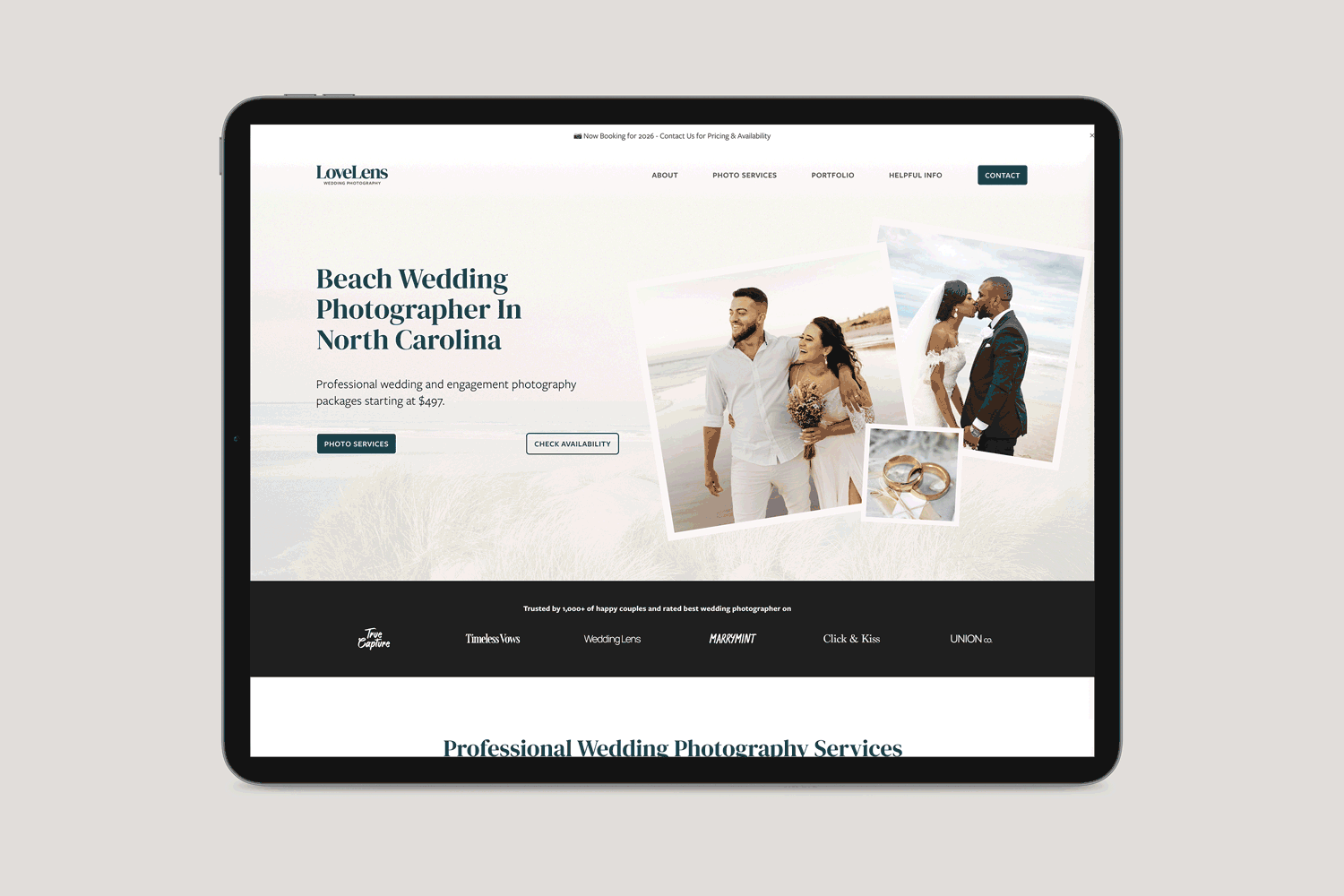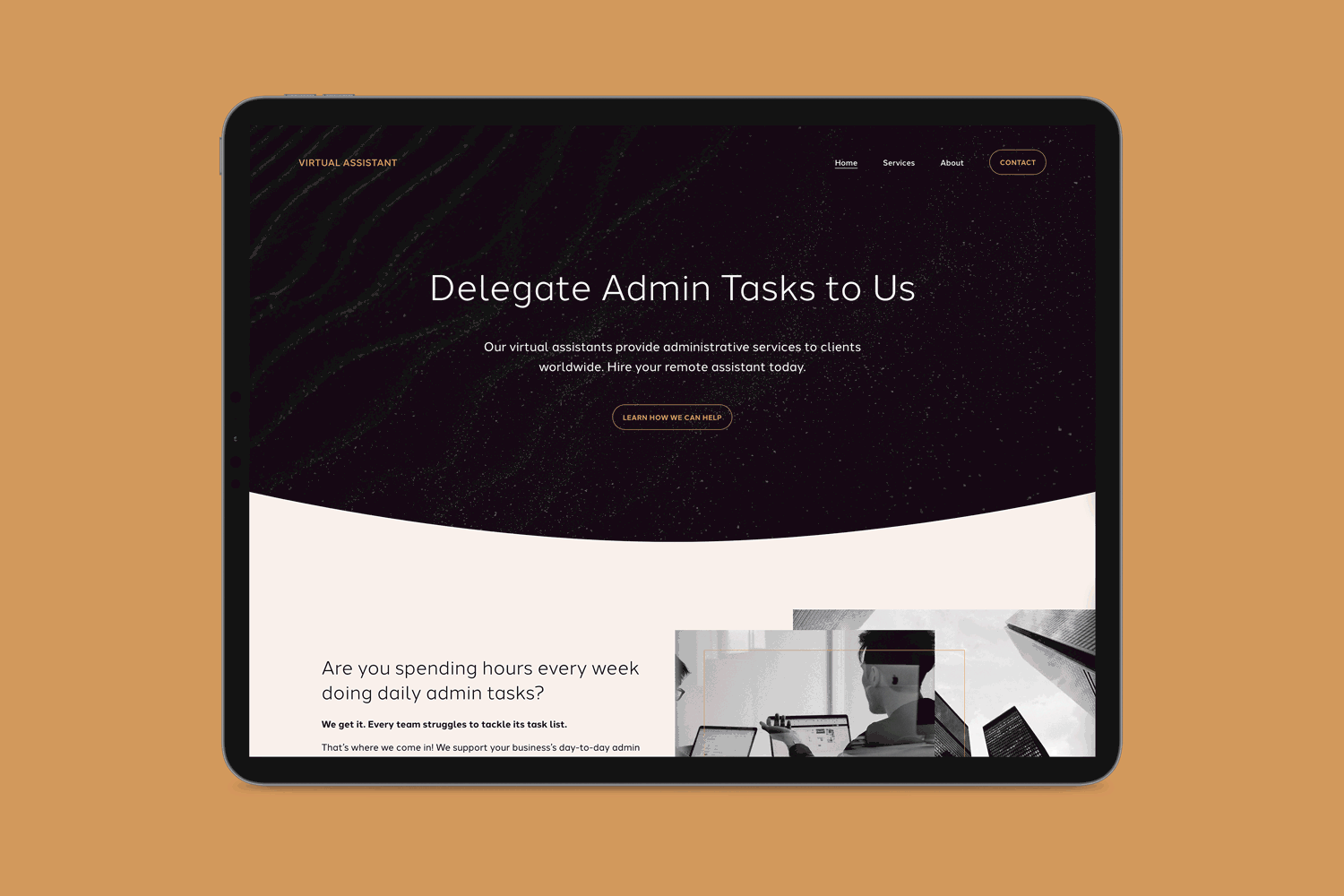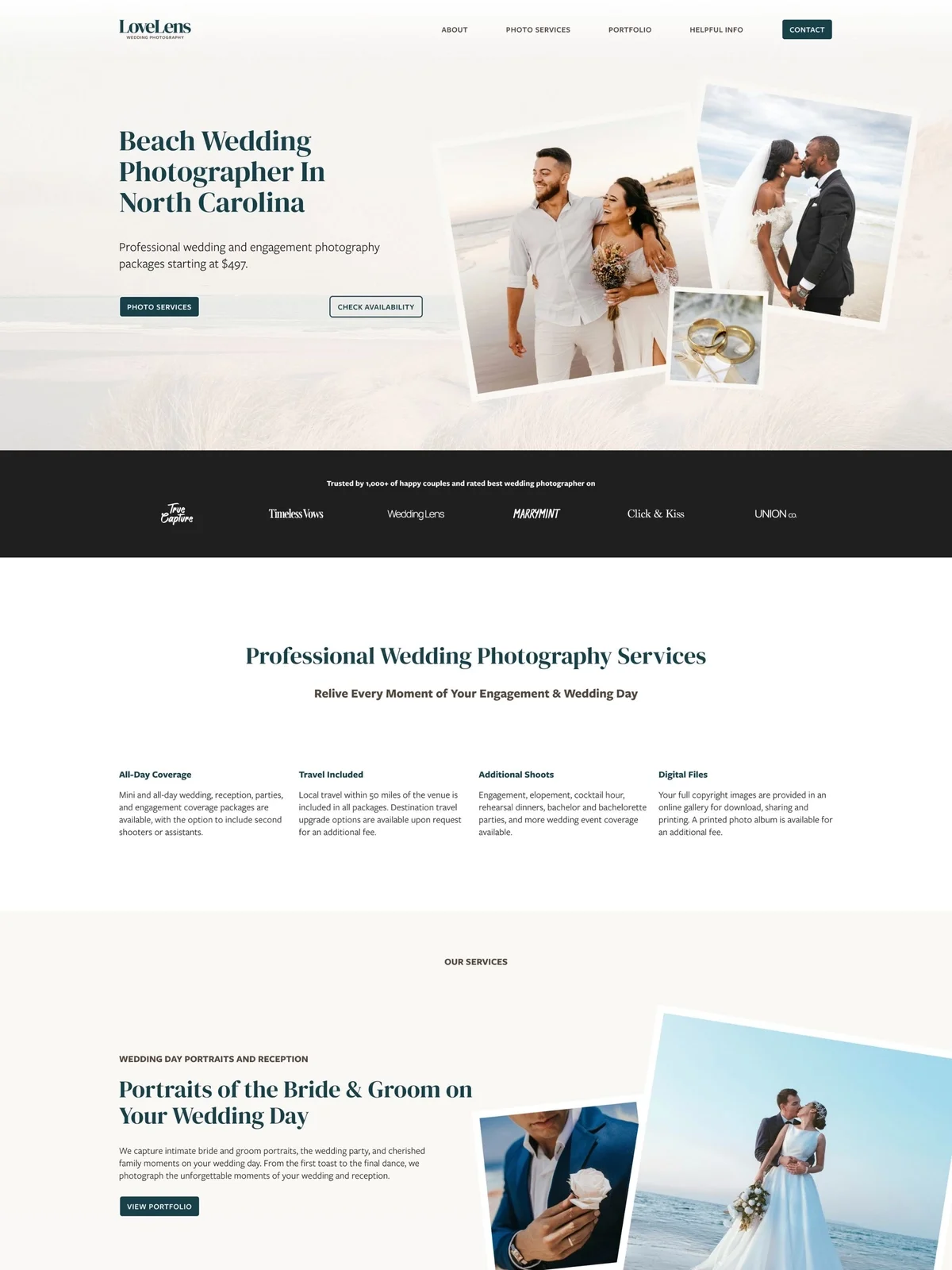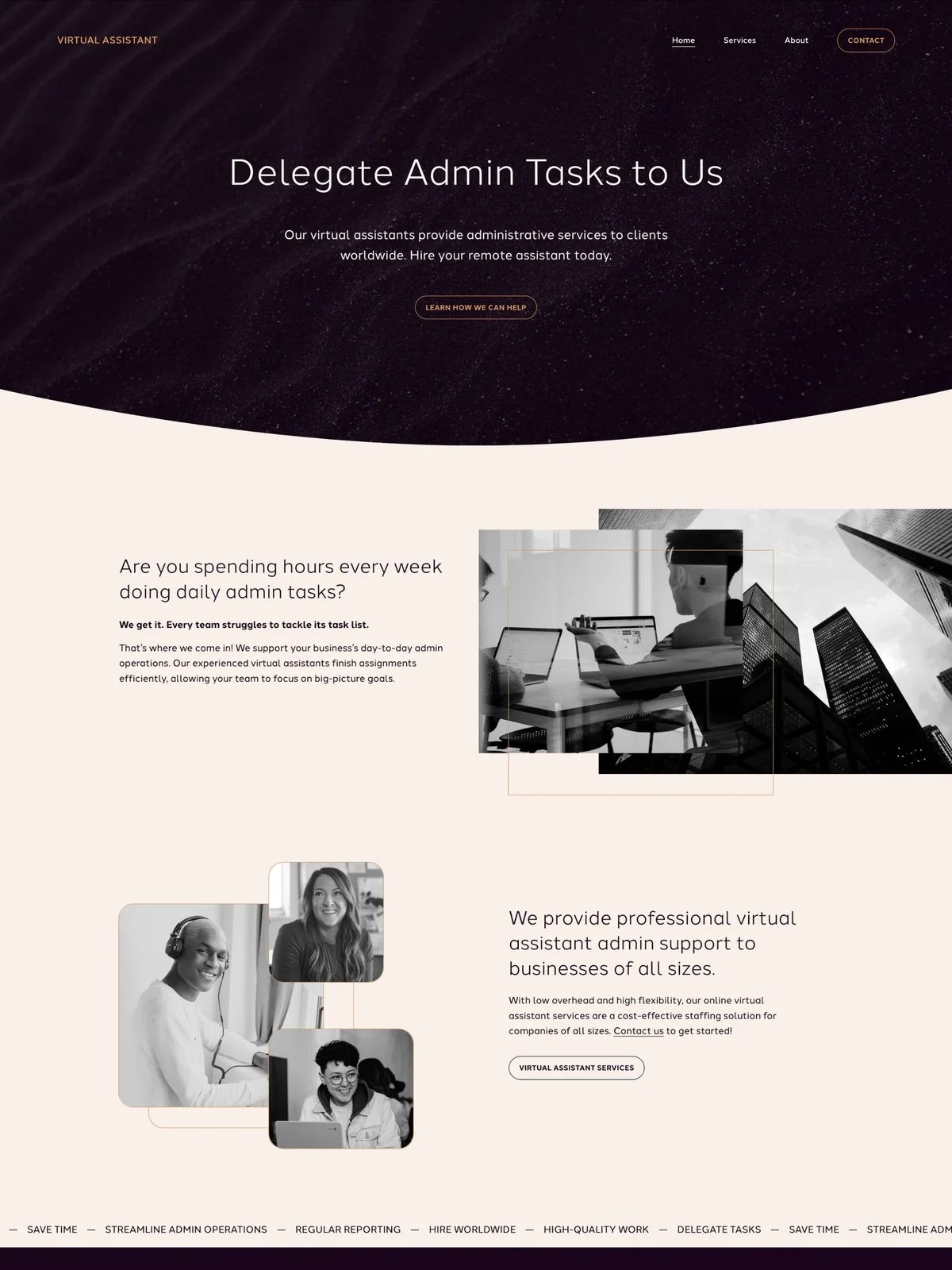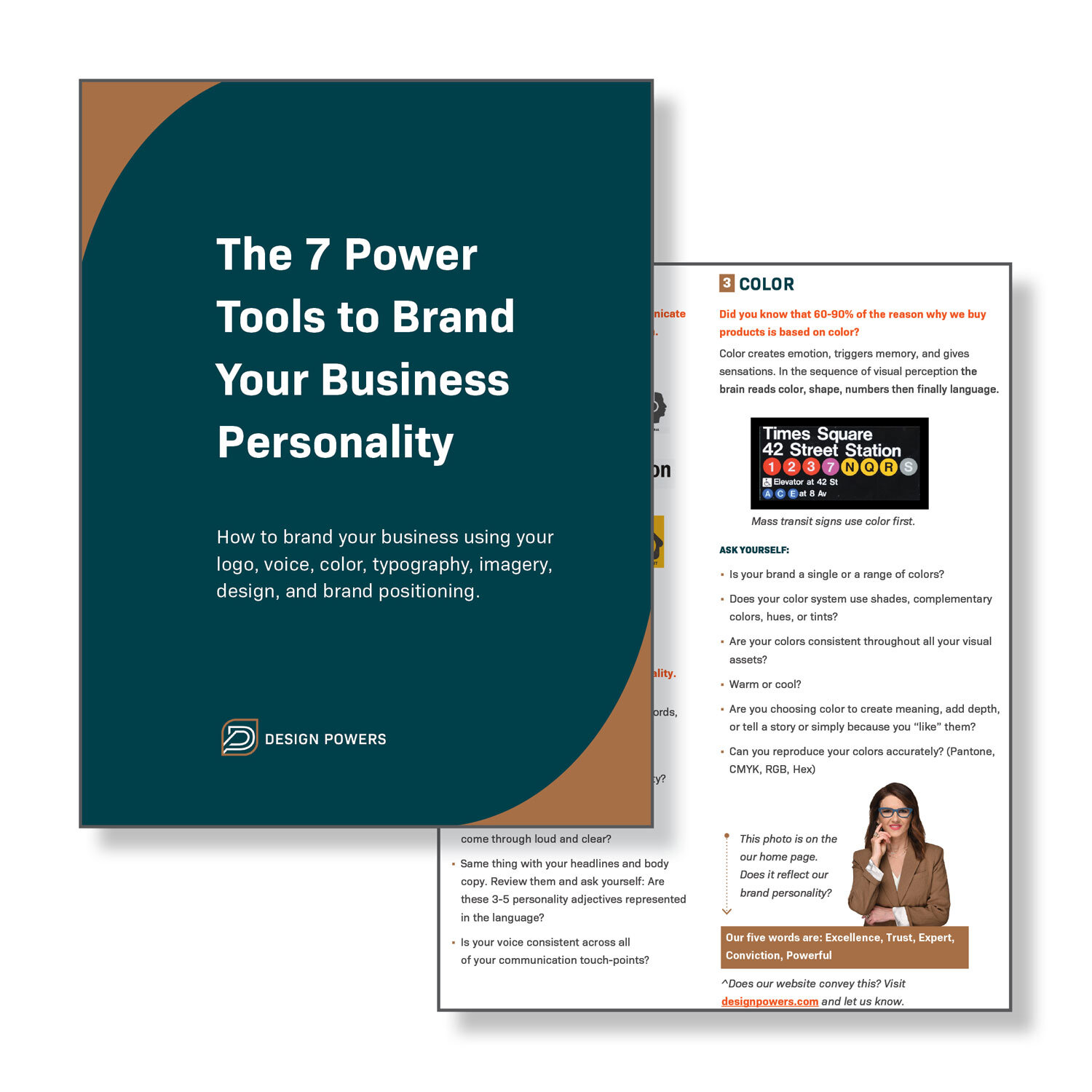DIY vs Professional Web Design: What’s Best for Building Your Small Business Website in 2026?
QUICK LINKS
PROS & CONS: Building Your Own Website or Hiring a Design Team
You’re a small business owner ready to redesign or launch a new website and asking yourself, “Should I DIY or hire a pro?”.
With today's website builders and AI tech, creating a site seems easy, right? Despite the abundance of online resources, the decisions you need to make to get your site up and running can feel overwhelming. What should you do for research, marketing strategy, content writing, visual creation, brand design, technical setup, platform choice, etc?
We understand the decision overwhelm because we’ve been there. Design Powers began as a full-service graphic design firm in 1996. Back then, we didn’t have a website because the process felt daunting and complicated. Since then, we’ve launched and redesigned our website multiple times and helped other small businesses do the same.
This guide breaks down the pros and cons of DIY and hiring professionals. Read the post for information you need to consider to make an informed decision about which option is best for your business.
OPTION 1: DIY Website Design
Low Budget
The biggest reason businesses opt for DIY is cost. When you do it yourself, you won’t be paying professional rates for someone doing it for you. If your project has a low budget, you’ll likely be spending more time than money.
You’ll need to factor in unavoidable costs to run the site, like site hosting, domain registration, and custom domain email fees. Website builders, such as Squarespace, offer monthly or annual plans that include hosting, basic templates, domain registration for the first year, and security.
Solopreneurs and micro-businesses with limited budgets may want to prioritize other aspects of their business, such as business offerings and processes, before building a website. You can create a DIY site to get started and upgrade to a more professional one later, once your business is more established.
QUESTION: Do you have funds to invest in your business’s online presence now?
Time and Learning Curve
DIY builders often promise “launch your site in a day” — but reality can differ, especially if you’re not tech-savvy or design-inclined. Expect to spend 10–40 hours learning how to use the platform, formatting content, and troubleshooting layout and technical issues.
If you enjoy reading help guides, platform forums, watching training videos, and engaging in strategic, online creative work, this can be a rewarding experience. However, if your time is better spent running your business, DIY might quickly become a time-suck and an energy drain.
To put it simply, you don’t know what you don’t know. There will be things you need to figure out along the way, and mistakes will be made. On the upside, if you invest time, you’ll gain many new skills and be able to run your website on your own.
QUESTION: Do you have the time and space to develop your own strategy, content, and design, while also learning about technology and your website builder platform?
Design Customization
Most DIY tools feature drag-and-drop interfaces, making it straightforward to add elements and content. However, customizing the content and design requires advanced skills to achieve a look and feel that is truly exceptional.
Basic templates can look generic if not personalized and branded. If you’re already extremely comfortable using Canva or social media design tools, you’ll adapt easily. For simple landing pages or portfolio sites, a DIY approach is usually enough.
But, suppose you need in-depth branding, SEO/AIO optimization, e-commerce, or custom integrations. In that case, you’ll likely need to hire someone with experience to help you set things up correctly the first time.
Keep in mind, a website is more than design — it’s also about strategy, conversion, and SEO/AIO. If your goal is long-term business growth, a DIY site might not entirely reflect your business vision.
QUESTION: Do you have skills in creative design, and are you proficient in using design software at an advanced level?
Technical Complexity
If all you need to set up is a one-page website with a contact form and a domain connection, DIY can get you there. However, if you require more technical setup, you may want to seek help from a professional.
Suppose you need to set up a custom email address, complex forms, e-commerce, digital products, an online scheduler, email newsletters, membership sites, blogs, videos, social media integration, third-party integrations, plugins, analytics, legal policies, multiple domains, or subdomains. In that case, you may reach your technical limit.
You might also want to design further than the built-in platform allows, using custom CSS or Java code. Additionally, depending on your industry, you may need to comply with specific standards or laws, and not all software or designs will be compatible with these requirements.
QUESTION: Are you tech-savvy and know how to research, set up, and troubleshoot tech and connect it to your site and/or multiple platforms?
Security and Support
DIY website platforms handle most security and maintenance automatically, which is great for both beginners and pros. Most builders include SSL, DDoS protection, and customer support, making them relatively low-maintenance in terms of security.
Platform company support can vary between live chat and email support. Still, they all offer online help guides and typically provide a community forum, which helps users connect and find answers to common questions.
Some platforms don’t offer built-in security, and you’ll need to handle weekly or monthly updates, back up your website, and be on the hook for security if something goes wrong. While security is primarily platform-dependent, if you’re working with an agency, be sure to ask about ongoing security updates and what that maintenance entails in the long run.
If you’re debating two of the most popular platforms on the market, check out our in-depth blog post: WordPress vs Squarespace: How to Know Which One is Right for Your Business.
QUESTION: Do you want to be responsible for your website security, or do you want security to be baked in?
Get our Premium Squarespace Templates
Start with a high-quality foundation and elevate your site with our professionally designed Squarespace templates available on SquareKicker.
LoveLens Template
This elegant, multi-page wedding photography website template is ideal for professional photographers, creative studios, or boutique agencies.
Virtual Assistant Template
This modern one-page Virtual Assistant website template is perfect for a solopreneur, freelancer, small business, or agency.
View Premium Squarespace Templates on SquareKicker
OPTION 2: Hire a Professional Web Designer
Higher Budget and ROI
Hiring a professional designer is a larger upfront investment, but consider it an asset-building endeavor that will ultimately pay off in the long run.
Pricing for a website will vary based on the vendor, their level of experience, and the specific deliverables outlined, which may include research, content writing, photography, brand and logo design, site build, and third-party integrations. You’ll also need to pay for platform fees and possible ongoing maintenance.
A professional website not only looks polished but also performs better in search rankings, conversions, and brand trust — making it easier to attract and convert clients. Pricing can range from $2,500 – $25,000+. Do you need a one-pager, a brochure-based site, e-commerce, or something else?
A lot of the time, you don’t know what your business needs, and a pro can help you figure that out. It’s often money well spent to schedule a call to identify problems, explore solutions, and develop a plan.
Schedule a call ahead of your desired launch date, as professionals often book projects three months in advance of their start dates—projects can incur rush fees if you need it done yesterday.
QUESTION: Are you ready to invest in your business’s online foundation so you can effectively market your products or services and increase your revenue?
Time Savings and Efficiency
A professional designer takes most of the project off your plate. You’ll still need to carve out a bit of time from your schedule for a discovery call(s), content gathering, photoshoots, feedback meetings, tech setup and/or handoff, and final review(s).
Pros typically use project management software to organize projects into phases with clearly defined tasks and subtasks, assigning them to team members with a set deadline date. This keeps projects transparent and on track.
Pros handle site architecture, content optimization, foundational SEO setup, design, build, and integrations (contact forms, scheduling, e-commerce, legal policies, domain setup, etc.). This will save you weeks of trial and error, ensuring a faster and more strategic launch.
When you work with a small team, like Design Powers, we focus on your project from start to finish and provide complete client support throughout the entire project.
QUESTION: Do you need a professionally designed brand and website created for you within a reasonable timeframe?
Strategy and Design Customization
A good web designer doesn’t just make your site “pretty” — they build it with marketing psychology and UX design principles in mind. Pros help you clarify your brand message, design for your target audience, optimize your site for SEO and conversion, and integrate your marketing funnel.
Strategy comes first, then content, then design — in that order. A pro will help you sort through your existing content, reorganize it, create new content, and design a premium brand around it.
Excellent brand and website designers wear many hats. In addition to creating beautifully functional brands and websites, they are also online strategists, content creators, SEO/AIO pros, builders, and marketers.
Design agencies can range from solopreneurs to small teams and large firms. With a professional, your website becomes a powerful business tool — driving traffic and generating sales.
QUESTION: Do you need a strategic partner with advanced website-building experience to help you design your big idea?
Expert Skill Level and Technical Complexity
Professional web designers bring years of experience in graphic design, coding, SEO, and branding. They know how to use proper heading hierarchies for SEO, optimize images for performance, implement responsive and accessible layouts, and configure analytics, among other tasks. There are many details that DIYers often overlook — but they’re critical for your site’s visibility and performance.
Pros do a lot of unnoticed work behind the scenes, like planning site architecture and content, designing and optimizing graphics, building pages, specifying page settings, designating site styles (font, colors, spacing, etc.), designing page layouts (desktop, tablet, mobile), integrating tech (contact forms, scheduling, online stores), and configuring site settings properly.
Generally speaking, pros are specialists in website-building platforms and have experience with technical setups. Depending on what you need set up, a pro can likely get it done for you or refer you to another professional in their network to help.
QUESTION: What functions does your website need to perform for your business, and do you need help setting that up?
Security and Ongoing Support
A professional will either use a website platform that handles security for you or a platform that requires you (or them) to maintain security on an ongoing basis and at a cost (in terms of time and/or money).
Some website platforms handle most security and maintenance automatically, which is great for both beginners and pros. Most builders include SSL, DDoS protection, and customer support, making them relatively low-maintenance in terms of security.
We love using Squarespace because it includes security in the hosting plan. However, some companies require you to be on the hook for an ongoing maintenance package (usually starting at $50–$150/month) that covers backups, plugin updates, and performance checks.
Ask your pro if security is built into the platform they will be using to build your site! Depending on the platform, ongoing care protects your investment and keeps your site performing at its best.
If you’re debating two of the most popular platforms on the market, check out our in-depth blog post: WordPress vs Squarespace: How to Know Which One is Right for Your Business.
QUESTION: Do you want to be responsible for your website security, or do you want security to be baked in?
DIY vs Pro: Quick Comparison Table
| FEATURE | DIY | PRO DESIGN |
|---|---|---|
| Cost | Low upfront | Higher upfront, better ROI |
| Time | High (learning curve) | Low (handled by pros) |
| Customization | Limited | Fully Custom |
| SEO/AIO | Basic | Advanced |
| Security | Included | Included |
| Maintenance | DIY | Managed |
| Support | Platform-based | Personalized |
| Design Quality | Template-based | Branded + Strategic |
What About a Hybrid Option?
Suppose you like the idea of being hands-on but still want professional input. Consider a hybrid approach. In that case, you handle basic content and a designer builds the framework, branding, and structure.
Some web designers prefer that you create and deliver all the assets — branding, written content, and visual content — and then hand them over at a deadline, allowing them to build the site only. Designers can also offer premium, pre-designed templates for purchase and provide template customization services.
A hybrid option is typically offered at a lower price point than a custom website, as you provide all the assets, and they only build a site or customize a pre-built template.
A hybrid option is not the best choice for your business if you require a strategic partner to assist you throughout the project and need fully custom design work.
QUESTION: Do you already have all assets in hand and only need help building the website?
Design Powers doesn’t currently offer template customization services, but we do have two premium templates for sale on SquareKicker! Preview our templates below.
Need custom website design services for your business? Schedule a call.
FAQs
-
Expect to pay $2,500–$25,000+ for a custom-designed site, depending on the features, functionality, and the designer's experience.
One question we get asked often is “How much does a website cost?” Taken at face value, it seems like a reasonable question but substitute “website” with “car” or “house” and you can see that it’s impossible to answer that question accurately without a lot more details.
Schedule a call to discuss your project and get a quote.
-
Yes. Many small businesses start with a DIY site, establish their business, and then rebrand or redesign professionally once they grow and gain a deeper understanding of their business’s offerings.
-
We prefer the Squarespace platform.
Read Why We Recommend Squarespace for Small Business Owners.
Read our blog post WordPress vs Squarespace: How to Know Which One is Right for Your Business for a comparison.
If you have a physical products business and an online store, check out Shopify.
-
Most professional sites take 4–8 weeks, depending on scope, content readiness, and feedback speed.
-
Yes. An experienced pro ensures your site follows SEO/AIO best practices, which increases your visibility in Google and AI searches.
Final Thoughts
Your website is often the first impression your business makes online — make it count.
Whether you opt for a DIY approach or hire a professional, the key is to align your decision with your goals, budget, and brand strategy. If you’re unsure which direction to take, book a free consultation.
We are web design experts who can help you make the most informed decision for your business!
Download Our 7 Power Tools Brand Guide
Download our guide on how to brand your business personality using your logo, voice, color, typography, imagery, design, and brand positioning.


